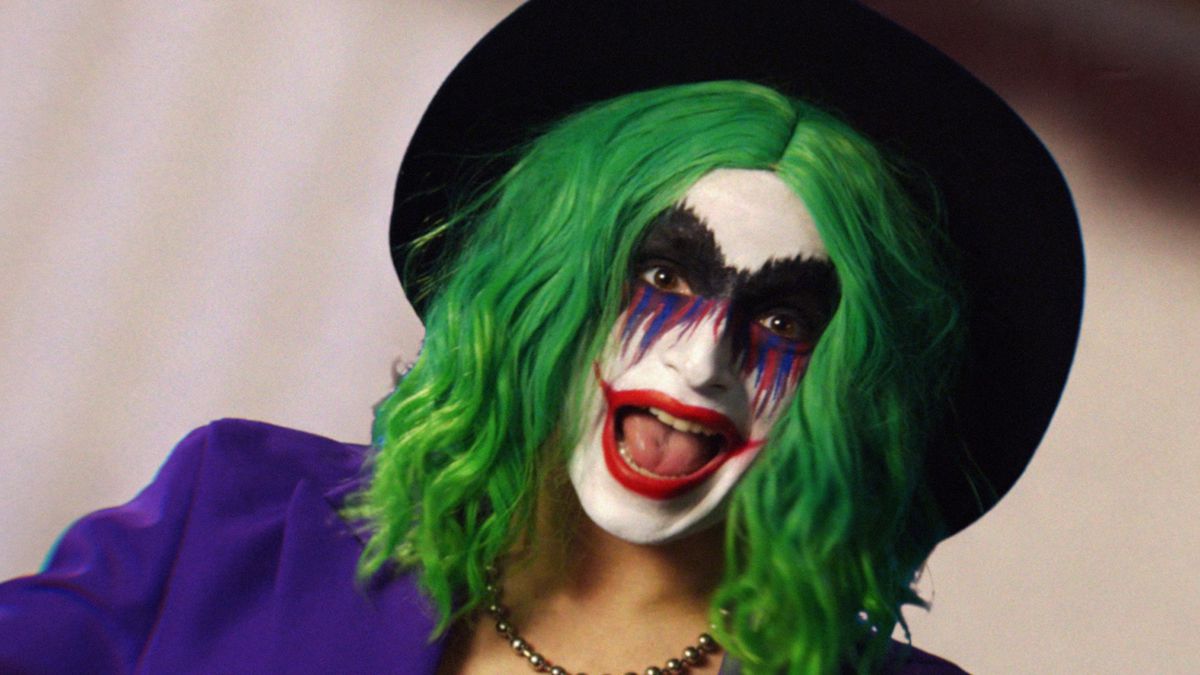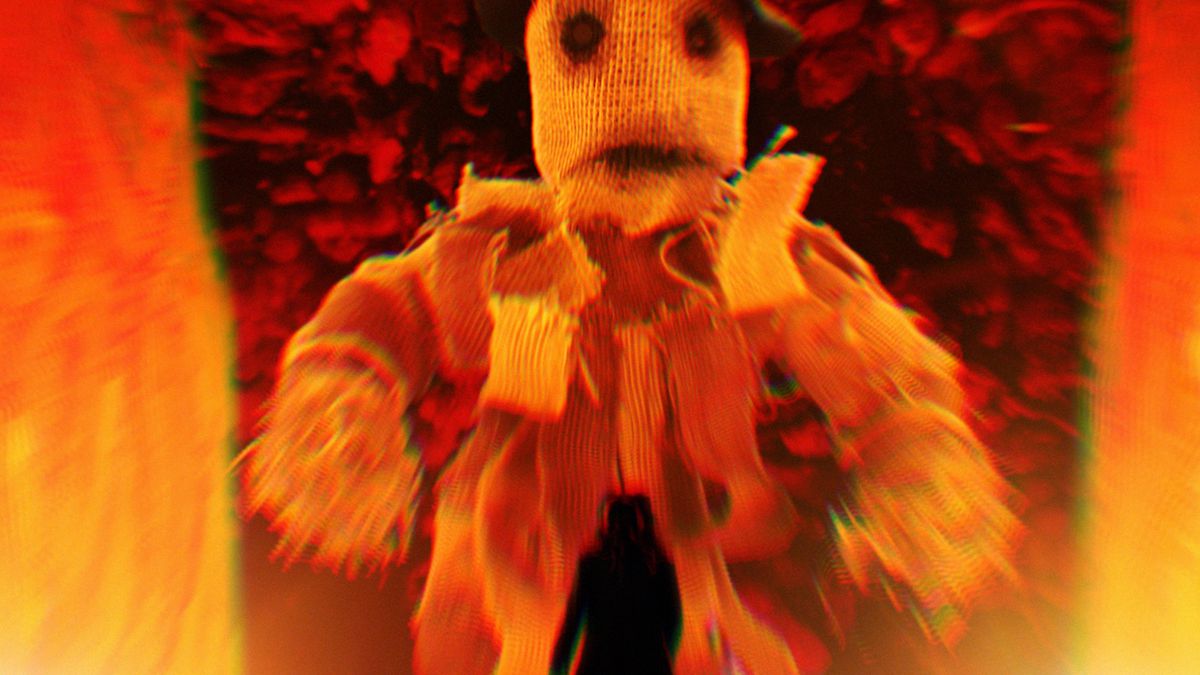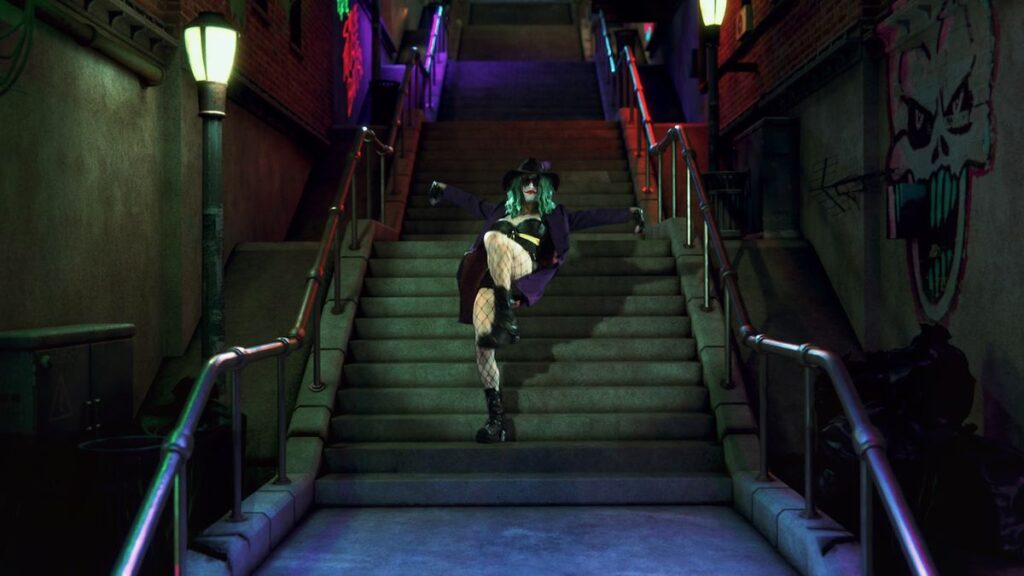If Warner Bros. Pictures had successfully intimidated trans filmmaker Vera Drew out of releasing her tiny pop-punk biopic The People’s Joker, it’s possible that it would have disappeared quietly: yet another small, personal indie film hunting for an audience in an oversaturated market. Instead, Vera’s hallucinogenic memoir — an energetic, rawly personal trans coming-out story built around crowdsourced digital animation — became international news.
The People’s Joker premiered at the Toronto International Film Festival in 2022, but a sharply worded letter from Warner Bros. about copyright concerns led Vera and the TIFF organizers to cancel further screenings and take it off the market. Vera retreated to refine the film, while looking for a simpatico distributor that wouldn’t bury it with a straight-to-streaming release. It’s screened at a handful of regional festivals since then, but it’s largely been unavailable to the public.
That’s left The People’s Joker as an intriguing mystery for some would-be viewers, and a topic of queasy worry for others. The movie explores trans identity as a parallel to Todd Phillips’ villain origin story Joker, among many other Batman-adjacent movies. Vera filters her life through familiar fiction, subverting and channeling popular characters to show how she navigated abuse, poisonous relationships, finding an identity through stand-up comedy, and the search for a happy ending.
Image: Altered Innocence
With so many people theorizing about the movie before they have any way of seeing it, that framing has raised some concerns. With the lives and rights of trans people being turned into a political battleground nationwide, and an increasing number of lawmakers openly vilifying trans people, the argument goes, is this really the time for a movie associating a trans woman with a character famous for being a mentally ill mass murderer?
Vera’s movie uses that metaphor in a richly layered way, drawing on the Joker — and equally on his sidekick turned independent antihero, Harley Quinn — as a kind of extreme jester who laughs at and upends societally accepted norms. In a wide-ranging interview with Polygon, ahead of The People’s Joker’s theatrical release on April 5, Vera said she understands any concern people have about the movie — but she hopes that once people see it, they’ll understand why it is, as she puts it, “one of the most joyfully queer films ever made.”
This interview has been edited and condensed for clarity.

Image: Altered Innocence
Polygon: There’s a lot of complicated symbolism in this movie, around Batman and his rogues’ gallery. But maybe the most complicated piece of symbolic language is the way the version of you we see in the movie is both Joker and Harley Quinn — her stand-up comedy stage name is literally “Joker the Harlequin.” Did that blend come from wrestling with your own gender? From wrestling with different aspects of Joker, and what you did and didn’t want to absorb? Or something else entirely?
Vera Drew: I think it was both — me grappling with the fact that I spent most of my life not knowing who the hell I was, on any level. It’s funny to me when I hear shitty transphobic people, TERFs or whatever, talk about groomers, or the trans experience getting pushed upon people, because I arrived at my transness from trying on every single identity under the sun. Comedy for me was about that, too. It was a place where I could wear a dress if I wanted to, because Hey, a man in a dress, isn’t that funny? It was also a place where I could just be anybody I fucking wanted to be. To my own detriment at times — I think it was one of the things that kept me lost, the vagueness of who I was.
My experience when I was coming out — and I think this is a lot of trans women’s experience — I was moving toward a space of I need to be hyper-feminine, I need to really lean into that side of a binary. And that quickly fell apart. It especially fell apart in the relationship I describe [in the movie]. Because I was with [a trans man] who was doing that toward the other side of the binary, embodying a fair amount of toxic masculinity. So I wanted to talk about both of those aspects: toxic masculinity and toxic femininity.
I’ve seen some early discomfort with this movie around associating transness with mental illness, or even psychosis. But it’s clear that’s an element you’ve thought through and that you’re intentional about. How do you make the case for a trans villain character to people who are nervous about this movie?
For starters, I just love queer villains. I always have. I am not a Disney adult, but I grew up watching Disney, and I think all of those villains — particularly, Ursula is just Divine from John Waters’ canon, and Jafar and Scar are two of the gayest villains of all time. I think it’s a trope that’s worth exploring, if only because a lot of times, we’re seeing queer-coded villains. Or not even coded: Scar is just a gay lion who wants to be king, and is very catty about it.
But I think it’s our job as queer people to reclaim some of those tropes, in the same way that a lot of marginalized communities have reclaimed tropes. I’m thinking specifically about people like Jordan Peele, who are leaning into things where you’re like, Hoooo, maybe we shouldn’t talk about this? But no, he can talk about that. He should! By the same stretch of the imagination, I live in a country that villainizes trans people. I’m called a groomer every day on Twitter.
Even just making this film, releasing it, I’ve gotten pushback from pretty transphobic alt-right accounts. The Daily Wire’s pop culture podcast can’t stop talking about this movie. It’s so funny, because they keep saying, ‘It looks so bad, but people are going to embrace it just because it’s made by a trans person.’ What a funny idea, that somehow being trans makes me more palatable to people! It’s laughable. It’s why that shit doesn’t even hurt me. Because I live in a country where I am treated like a villain just for walking down the street and being who I am. So why can’t I make a film that is directly exploring that?

Image: Altered Innocence
Were there other aspects of your story you wanted to lean into specifically because you weren’t seeing them in other stories about trans coming-out journeys?
I didn’t really know this was a thing until going out to festivals with the film, but I’ve heard a lot of queer filmmakers say we need to be telling stories that aren’t too traumatic; we need to be embodying queer joy, or trans joy, or whatever the hell. It just sounds like assimilationist bullshit to me. Every time I hear it, I’m like, I’m sorry, my life has been pretty traumatic, and I want to make honest art! So I’m going to process my trauma in that art sometimes.
And you know what: It still can be joyful! I think The People’s Joker is one of the most joyfully queer films ever made. I know I’m biased, but it is. It just is! It’s colorful, it’s vibrant, it’s gay, it’s irreverent.
I think there’s definitely a place for queer films that are more family-friendly, or more down-to-earth. Aristotle and Dante was one of my favorite films last year, and that is one of the happiest, sweetest gay love story movies I’ve ever seen. I love H. too — I specifically always want to shout that one out, just because I think it’s an amazing film. But there’s also space for films like this that explore the nuance and the “more problematic” things about being queer.
Queer art used to be like that. John Waters is one of the filthiest people of all time. I remember finally discovering his movies pretty late in life, and being like, Oh my god, this is it, this is what I needed. I finally feel represented by this. And all his characters are, like, addicted to whippets and murder.
If you’re watching a movie like this, where there’s a very clear main character — I hijack your brain for 92 minutes, and force you to look inside mine. So don’t you want to see somebody change and grow? Don’t you want to see somebody start as a villain, and either become more of a villain, or become a hero by the end, or oscillate somewhere in between throughout? That’s what storytelling is. That’s what mythmaking is. I get the sentiment. Representation is important. But I think the way to properly represent trans people is to treat them like human beings in film, and not like perfect angels or disgusting perverts. Somewhere in between.
The People’s Joker opens in theaters on April 5, rolling out across North America throughout April and May. Check here for participating theaters.

